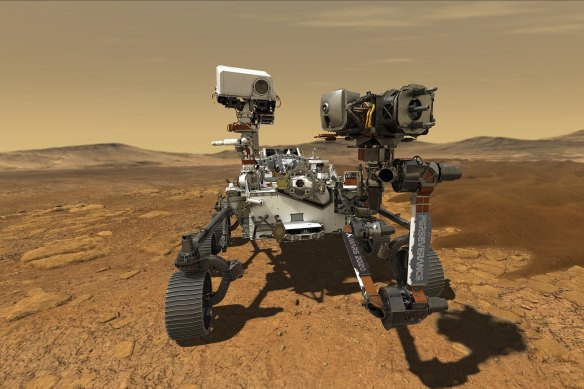Nasa Hails 'Great' Salvage Mission As Space Rock Test Arrives At Army Installation
Dusty examples from the "most perilous known rock in
the Nearby planet group" have been brought to Earth.
The American space organization Nasa handled the materials
in a case that descended in the West Desert of Utah state.
The examples had been gathered up from the outer layer of
space rock Bennu in 2020 by the Osiris-Rex shuttle.
Nasa needs to study the uneven article, not least since it
has a remote possibility of hitting our planet in the following 300 years.
In any case, more than this, the examples are probably going
to give new experiences into the development of the Nearby planet group 4.6 a
long time back and conceivably even the way that life began on our reality.
There was celebration when the Osiris-Rex group
noticed their container on lengthy reach cameras.
Score on desert land having a place with the Branch of
Protection was affirmed by Nasa at 10:52 nearby time (14:52 GMT).
The vehicle measured compartment had come shouting into the
climate over the western US at more than 12km/s (27,000mph). A heat shield and
parachutes eased back its plummet and dropped it tenderly on to confined
ground.
Asked how the salvage mission went, a portion of the
laborers told BBC News' science group that it was "magnificent".
Researchers are anxious to get their hands on the valuable
freight which pre-landing gauges put at exactly 250 grams (9oz).
That probably won't seem like without question - the
heaviness of a grown-up hamster, as one researcher depicted it - however for
the sorts of tests the Nasa groups need to do, it is more than adequate.
A portion of our instruments in a real sense take a gander
at the particles that make up the precious stones inside these stones, said
Osiris-Rex head specialist Dante Lauretta.
While you're working at that scale, a solitary stone is an
endless scene to investigate. We'll be dealing with these materials for a
really long time into the future, the College of Arizona teacher told BBC News.
Neatness was the watchword out in the desert. At the point
when the recuperation groups found the case on the ground, their inspiration
was to take it back to a brief clean room at the close by Dugway armed force
base as fast as could be expected.
If, as specialists suspect, the example contains carbon
intensifies that might have been engaged with the production of life then
blending the rough material in with present-day Earth science must be kept away
from.
"The neatness and forestalling tainting of the shuttle
has been a truly severe necessity on the mission," said Mike Morrow, the
Osiris-Rex representative venture supervisor.
"The most effective way that we can safeguard the example is simply to get it from the field into the tidy lab that we've set up here in a shed as fast as could really be expected and get it under an unadulterated nitrogen gas cleanse. And afterward it's protected."
The recuperation groups will dismantle the case, eliminating
its heatshield and back cover however leaving the example secure inside an
inward canister.
Monday ought to see this canister traveled to the Johnson
Space Center in Texas where the examination of the examples can start.
UK researcher Ashley Ruler will be essential for a six-man
"Brief glance" group that will lead the underlying evaluation.
"I'm hoping to see a rough sort material that is
extremely delicate, exceptionally delicate," the Normal History Exhibition
Hall master said.
"It'll have dirt minerals - silicate minerals that have
water secured in their construction. Loads of carbon, so I think we'll most
likely see carbonate minerals, and perhaps a few things we call chondrules and
furthermore calcium-aluminum considerations, which were the absolute first
strong materials to frame in our Nearby planet group."
Nasa is arranging a public interview on 11 October to give
its most memorable interpretation of what has been returned. Little examples
are to be circulated to related research groups across the globe. They desire
to report back on a board scope of concentrates in two years or less.
"One of the main pieces of an example return mission is
we take 75% of that example and we will lock it away for people in the future,
for individuals who haven't even been conceived at this point to work in
research facilities that don't exist today, utilizing instrumentation we
haven't as yet even considered," Nasa's head of planetary science, Lori
Coating, told BBC News.
watch our funny video; https://rumble.com/v3iu12k-funny-moment-in-soccer.html?mref=2tvjde&mc=b863u

Comments
Post a Comment